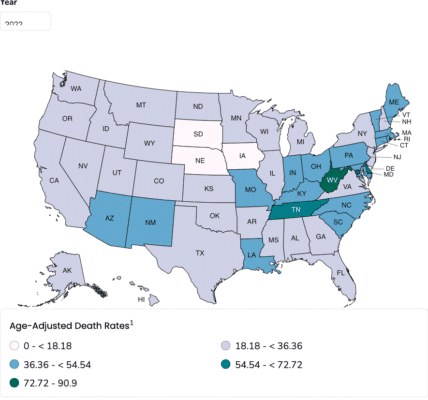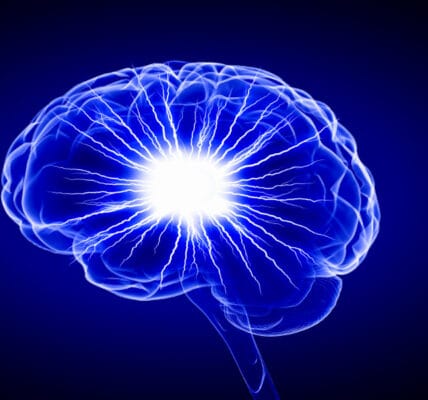The Anticipation Wrinkle, The Expectation Wrinkle, and the Neurocircuitry of Addiction

My colleague at AddictionNews, science writer extraordinaire, Pat Hartman, has written a series of interesting articles on “the anticipation wrinkle.” Functional magnetic resonance imaging (fMRI) scans show that the brains of opioid addicts light up when shown images of drug use the same way that the brains of obese people light up when shown images of junk food. Compared with control groups, persons with substance use disorders exhibit a stronger response to stimulating imagery.
Then there’s a wrinkle. And the wrinkle is that more dopamine is released in anticipation of indulgence than in the act of indulgence. The chronic substance user gets high from the anticipation of consuming. Consuming releases the tension between anticipation and indulgence and turns the dopamine faucet down until the next cycle starts a few hours later.
In her latest post, Pat Hartman examines the anticipation wrinkle in compulsive gambling disorder and how it’s similar to eating disorders. It’s the anticipation of winning — and even the anticipation of losing — that spikes the gambler’s dopamine. The outcome of the gamble is anticlimactic. Pat writes:
The dopamine of anticipation can never let us down. It is its own reward. It can never betray, or disappoint.
A review in the journal Progress in Neuro-Psychopharmacology and Biological Psychiatry finds that “the anticipatory dopamine response may constitute a common underpinning of gambling disorder and substance use disorder.” Dr. Jakob Linnet from the Clinic for Gambling and Binge Eating Disorder at Odense University Hospital, in Denmark, writes:
The evidence from neuroimaging studies of anticipatory dopamine processes in gambling disorder and substance use disorder [show] reward anticipation is endogenous and does not involve the intake of substances.
“[T]he dopamine response is cue-driven,” writes Dr. Linnet. In an interesting expectation wrinkle added to the anticipation wrinkle, Dr. Linnet notes that cues are weighted and that those cues which most often lead to reward are stronger dopamine producers. The Danish psychiatrist concludes that “anticipatory dopamine” in response to reward cues reinforces addictive behavior.
In an invited review for the journal, Neuropharmacology, a team of researchers from the Laboratory of Neuropharmacology-Neurophar at the Universitat Pompeu Fabra (UPF) in Barcelona, Spain, provide a rather concise and eloquent description of the neurocircuitry of the brain’s reward system:
The neurocircuitry underlying addiction lies initially in the brain reward system. Within this system, several interconnected networks involved in reward sensitivity, conditioning, emotional processing, and inhibitory control are first recruited by drug exposure and later modified by long-lasting neuroadaptations.
These networks can be clustered in three major neurobiological circuits: the basal ganglia, the extended amygdala, and the prefrontal cortex. These three major neurobiological circuits have its correspondence to three stages of the transition to addiction, i.e., binge/intoxication, the withdrawal/negative affect, and the preoccupation/anticipation stage, that interact with each other forming a recurring cycle in which addiction can be conceptualized.
At first, the intoxicating substance is thrilling. Soon, however, just the thought of the intoxicating substance is thrilling. The Spanish researchers write that an addicted mouse “acquires the ability to increase dopamine in the NAc by itself in anticipation of the reward.”
With substance use disorders, researchers found that it was sickness that drove users to seek relief for the pain of withdrawal, and not the anticipation of euphoria. The researchers chart a path from the euphoria of initial exposure to the anticipation high of repeated exposure to the degradation of the reward system and the loss of ability to enjoy anything else.
Researchers exploring the firing rates of neurons when mice self-administered cocaine found that, “Half of the neuron population predominantly decreased firing rates minutes after lever-pressing,” indicating the rapid decline of neurotransmitters in the consuming stage vs. the anticipation stage. The same held true, to a slightly lesser extent, with self-administered heroin and ethanol. The authors pointed out the similarities with binge eating disorder in a fascinating discussion of therapeutic treatments (the links in the quote were added by us):
In 2014, the FDA approved this combination of naltrexone and bupropion for obesity management. The fact that a drug used to treat drug addiction provides such an outcome when administered to patients suffering from binge eating disorder and abnormal eating patterns underlines the similarities in neuronal circuits shared with drug use disorders.
The Spanish review provides numerous observations like the one above that serve as springboards for additional research into the brain’s reward system and the pathways of addiction. The authors express their hope in, “The possibility to apply in a near-future novel technologies to selectively modulate the excitability of these specific neuronal pathways.” We look forward to reporting on that research here at AddictionNews.
Written by Steve O’Keefe. First published August 12, 2024.
Sources:
“The anticipatory dopamine response in addiction: A common neurobiological underpinning of gambling disorder and substance use disorder?,” Progress in Neuro-Psychopharmacology and Biological Psychiatry, March 2020.
“Vulnerability to addiction,” Neuropharmacology, March 2021.
Image Copyright: Rosmarie Voegtli, used under Creative Commons license.




